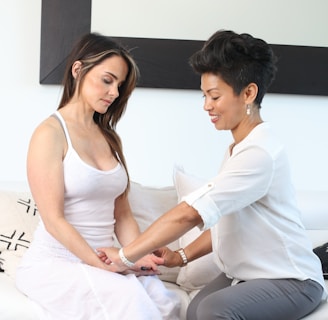How many Americans have actually undergone acupuncture?
1/22/20243 min read


Chinese cuisine, acupuncture, kung fu, and Chinese herbal medicine are renowned overseas and are referred to as the "New Four Great National Essences." It can be said with certainty that every American has tasted Chinese food and watched Chinese kung fu, but how many Americans have actually experienced acupuncture?
As early as 2012, the U.S. National Health Interview Survey reported that 15.38 million American adults had undergone acupuncture. According to the "Acupuncture and Oriental Medicine Day" website in the U.S., a survey initiated by the National Certification Commission for Acupuncture and Oriental Medicine showed that about 1/10 of American adults had received acupuncture at least once, with half of them feeling very satisfied or satisfied with the treatment.
In 2018, a bill in the U.S. first included acupuncture therapy, requiring an assessment of its pain-relieving effects within a year.
Research data published in the "Journal of Alternative and Complementary Medicine" shows that as of January 1, 2018, the number of licensed acupuncturists in the U.S. had increased by 257% compared to 1998, reaching 37,886, equivalent to 11.63 acupuncturists per 100,000 Americans. The states with the most acupuncturists include California, New York, and Florida.
The popularity of acupuncture in the U.S. is related to the legendary experience of a famous journalist.
In the summer of 1971, James Reston, a renowned journalist from The New York Times, fell ill during a visit to Beijing. Under the care of Chinese leaders, he was admitted to the "Anti-Imperialist Hospital" (Peking Union Medical College Hospital).
As a patient, Reston received unexpectedly good service at the hospital. His condition was taken very seriously, and after a consultation with 11 experts, he was diagnosed with acute appendicitis. That night, he underwent an appendectomy performed by the famous surgeon Wu Weiran, using conventional anesthesia, and the surgery went smoothly.
The next day after the surgery, Reston experienced symptoms of abdominal bloating and pain. The doctors explained that it might be due to the side effects of the anesthesia and asked if he was willing to try acupuncture treatment, which Reston accepted. A young male doctor then inserted three needles under each of his knees and elbows and used something resembling a "cheap cigar" to fumigate his abdomen. Reston thought at the time that this method of treating abdominal bloating seemed overly complicated. However, shortly after the acupuncture, his abdominal bloating and pain disappeared and never recurred. As a result, the Restons developed a strong interest in Chinese acupuncture. They not only had detailed discussions with the acupuncturists but also interviewed many doctors in the hospital, including their attending physician and the chief of surgery. Mrs. Reston even made detailed interview records and took photos of the doctors examining Reston.
With great interest in acupuncture, Reston wrote an article titled "My Operation in Peking" while in bed and published it on the front page of The New York Times.
What Reston did not expect was that his article aroused great interest in acupuncture among the American public, leading to continuous media coverage and becoming a "classic case" of a news story causing a major social phenomenon. Reston's article was the catalyst for the "American Acupuncture Craze."
In the fall of 1973, a lawyer in Las Vegas discovered the miraculous effects of acupuncture by chance and pushed for the legalization of Chinese medicine. Acupuncturist Lu Yi Gong demonstrated acupuncture treatments for various stubborn diseases on-site, convincing the public and legislators of its magical effects. The first Chinese medicine law in the U.S. was passed in both houses of the Nevada legislature with a vote of 54 to 2.
Decades have passed, and today, more and more Americans are joining the acupuncture industry.
A Chinese journalist once interviewed an American acupuncturist named Sarah Weiner. Weiner, a post-80s individual, began exploring this field of medicine after she and her father were cured by acupuncture. She opened a clinic and often made videos to introduce Chinese acupuncture. She also joined the Acupuncture Detoxification Association to help inmates with drug addiction.
Weiner is also an auricular therapy expert at the National Acupuncture Detoxification Association. Since 2007, she has been working three days a week in a state prison, using auricular acupuncture to treat inmates for addiction symptoms.
"I see 70 to 100 patients every week, from different ethnic groups, from children as young as two or three to the elderly over 80, all of whom love this ancient Chinese medical technique. There are also many first-time patients who are puzzled by my Caucasian face, but when they leave, they are all very satisfied," Sarah said.
